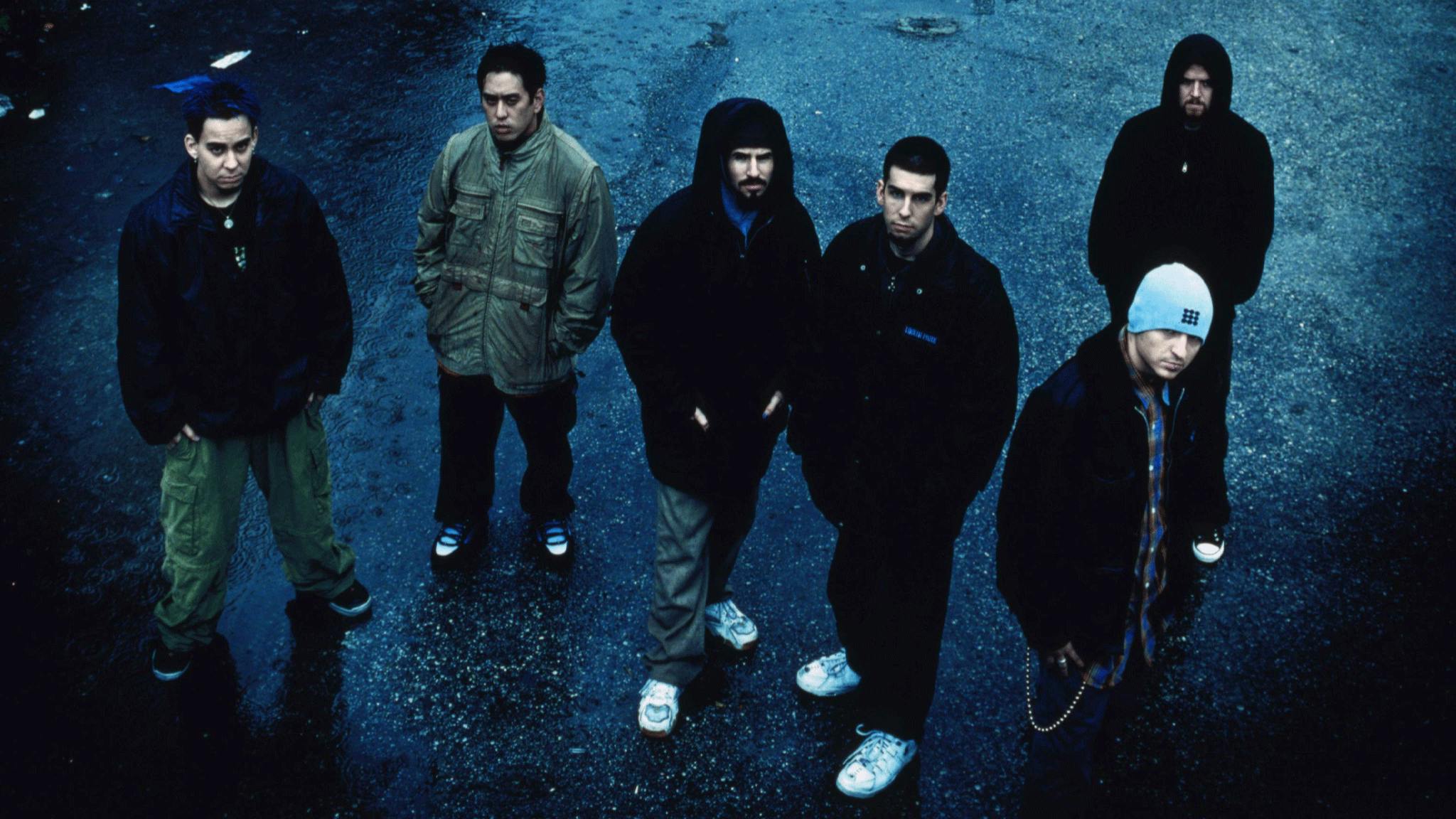Two incidents before Hybrid Theory’s release gave early glimmers that the album was something very special. Firstly, at a radio convention, programmers were treated to a taste of debut single One Step Closer. Originally called Plaster, it was hastily written when producer Don had encouraged the band to work on new material and was the perfect distillation of the band’s aggressive but accessible sound. The song prompted a frenzied reaction akin to meat being thrown into a piranha tank, resulting in it being rushed on to the airwaves and the album’s release date being brought forward. Meanwhile, One Step Closer’s colourful promo, featuring the band performing amidst levitating ninja warriors, was an equally big talking point. So much so, in fact, that while Chester was on holiday in Mexico a couple of weeks after its release, two women clocked the singer’s characteristic flame tattoos on his wrist – “[representing] the Aries part of my fire sign” – prompting one woman to whisper to the other, “That’s the guy in the video I told you about!”
Linkin Park’s star was clearly on the ascent – thanks, in no small part, to the band’s inventive approach to introducing their music to fans.
“We started seeing a following develop when we started doing street team work on the internet,” explained Mike. “We’ve always been interested in putting our songs out there for people worldwide. Once we had them available, we’d go into chat rooms and have conversations with people. Eventually, they’d ask about the band and we’d let them know where the music was at. I would sit and talk to five people at a time and one by one they’d all go and check out the site, coming back and saying that they liked what they heard.”
“I think it’s an important key,” said Chester of these innovations. “But first and foremost writing good music is the thing. It doesn’t matter how good your team is, or how much money you have behind you or how cool your video looks – if the songs aren’t there and the band can’t pull it off live, then nothing will come from it.”
But the songs were there. As was the live prowess, earned from tireless rehearsals in a room with leaky pipes on Sunset Boulevard. So, too, was the kind of pioneering marketing that would become the norm in years to come. Something was going to come from this.
Even with the promising clues and excitable word of mouth, no-one could predict just what a juggernaut Hybrid Theory would become upon its release on October 24, 2000. Debuting at number 29 in the US Billboard 200, the album would peak at number two, selling 50,000 copies in its first week. Four weeks later it was certified gold, signifying sales of 500,000 copies. Even two years later, the album continued to sell 100,000 copies a week in the band’s native U.S..
Hybrid Theory is nothing less than the best-selling rock album of the 21st century. As of today it’s sold 32 million copies, making it the biggest-selling debut since Appetite For Destruction by Brad’s heroes in Guns N’ Roses 13 years earlier.
Quite where the enterprising guitarist would be had he not accepted that internship, we’ll never know. But what was to follow would go down in history…
